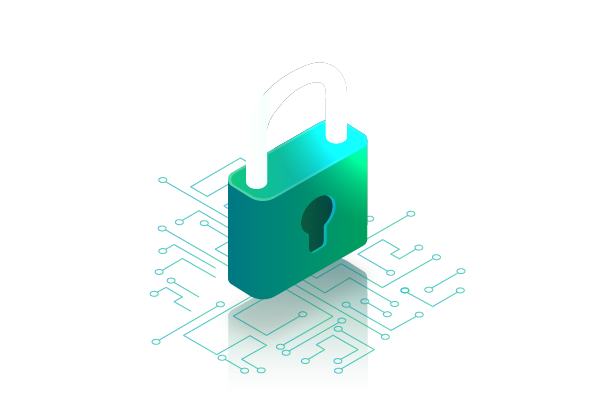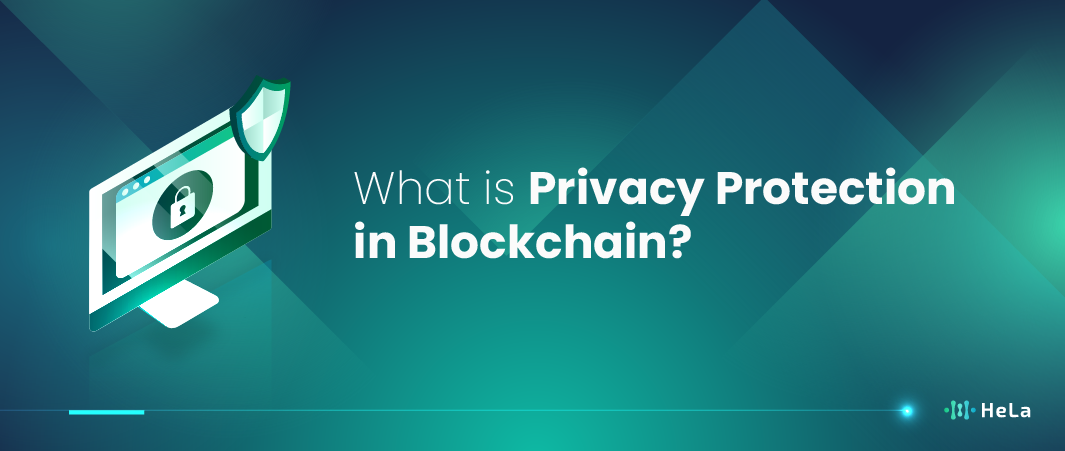Blockchain technology has revolutionized the way we think about data security and financial transactions. Despite its robust architecture, the issue of privacy remains a significant concern. Blockchain networks are typically transparent, where transaction details are visible to all participants. This level of openness, while ensuring security and trust, can potentially expose personal and financial information to unwanted scrutiny.
To address these privacy issues, several techniques and strategies have been developed to enhance the confidentiality and anonymity of transactions on blockchain networks. Understanding these privacy protection methods is crucial for anyone involved in the digital assets space, whether you’re a blockchain developer, investor, or just a tech enthusiast.
In this comprehensive guide, we will explore the various methods to safeguard your digital assets within the blockchain framework. We will discuss encryption techniques, privacy-focused cryptocurrencies, and the use of zero-knowledge proofs among other strategies. Let’s dive into the essentials of maintaining privacy on the blockchain and how to implement these measures effectively.
Understanding Blockchain and Privacy Basics
Indeed, the transparency of blockchain, while a boon for security and accountability, poses significant challenges for personal privacy. Here’s a deeper look into how blockchain technology works and the specific privacy issues it encounters:
How Blockchain Works
- Transactions: Each user action on a blockchain is a transaction, whether it’s exchanging cryptocurrencies, executing smart contracts, or recording data.
- Blocks: Transactions are grouped into blocks. Each block contains a cryptographic hash of the previous block, creating a chain.
- Network Nodes: Each participant (node) in the network has a copy of the entire blockchain, which gets updated with new blocks validated by consensus protocols.
Privacy Concerns in Blockchain

- Public Ledgers: Most blockchains are designed as public ledgers, meaning that anyone can view any transaction ever recorded. This visibility is critical for the transparency and trust of the system but can expose sensitive personal data.
- Pseudonymity, Not Anonymity: Users are identified by their public keys, not their real names. However, once a public key is associated with an individual’s identity, all transactions made with that key can be traced back to the individual.
- Data Immutability: Once data is recorded on a blockchain, it cannot be altered or deleted. This permanence ensures security against fraud but also means that once personal data is exposed, it remains on the blockchain forever.
Privacy Solutions in Blockchain
To address these privacy concerns, various solutions have been developed:
- Zero-Knowledge Proofs (ZKP): This cryptographic method allows one party to prove to another that a statement is true without revealing any additional information beyond the validity of the statement itself.
- Ring Signatures: Used notably by cryptocurrencies like Monero, ring signatures mix a user’s account keys with public keys from the blockchain to obscure the identity of the sender.
- Private Blockchains: Unlike public blockchains, private blockchains restrict participation to selected members, providing more control over who sees what information.
- Mixing Services: These services allow users to combine their transactions with others, making it more difficult to trace specific coins back to any individual user.
- Sidechains and Channels: These technologies create secondary channels or separate blockchains linked to the main blockchain, allowing users to conduct transactions more privately.
These techniques enhance privacy by adding layers of anonymity or restricting access to data, thus helping mitigate some of the inherent privacy issues in traditional blockchain models. By incorporating these advanced technologies, blockchain can continue to offer high levels of security while also increasing data privacy for its users.
Also Read: 10 Best Cryptocurrency Cloud Mining Websites in 2024
Encryption Techniques for Enhanced Privacy

Encryption techniques are vital in both traditional digital security and blockchain technology. In blockchain, encryption not only ensures the confidentiality of transactions but also helps in maintaining the integrity and authenticity of data. Here’s a deeper dive into the various encryption techniques used and how they contribute to enhanced privacy:
1. Public-Key Cryptography
- Asymmetric Encryption: Public-key cryptography, a form of asymmetric encryption, uses two different but mathematically linked keys. Each user has a public key, which can be shared with anyone, and a private key, which must be kept secret. This is crucial for blockchain as it enables secure communications and transactions between parties without prior mutual agreements.
- Digital Signatures: Besides encryption, public-key cryptography is also used for digital signatures, which verify the authenticity of a message or document. In blockchain, this is used to confirm that transactions are authorized by the holder of the digital assets.
2. Homomorphic Encryption
- Secure Computation: Homomorphic encryption allows computations to be carried out on ciphertexts, producing an encrypted result that, when decrypted, matches the outcome of operations performed on the plaintext. This is particularly advantageous for privacy-preserving data analysis and secure, decentralized computing environments like blockchain.
- Applications in Blockchain: For blockchain, homomorphic encryption can enable complex operations like voting, auctions, or confidential contracts without revealing the underlying data to anyone except the parties involved.
3. Zero-Knowledge Proofs
- Privacy without Disclosure: Another technique that enhances privacy in blockchain is zero-knowledge proofs. This method allows one party to prove to another that a given statement is true, without revealing any information apart from the fact that the statement is true.
- Use in Cryptocurrencies: Zero-knowledge proofs are integral to some privacy-focused cryptocurrencies, allowing users to conceal transaction details such as the sender, receiver, and amount, while still ensuring that the transaction adheres to the network’s rules.
4. Multi-Party Computation (MPC)
- Joint Computation: MPC involves several parties jointly computing a function over their inputs while keeping those inputs private. In the blockchain context, this can facilitate collaborative decisions or agreements without any single party having access to all data.
- Application Scenarios: This could be used in scenarios like cross-border payments where multiple banking institutions can verify transactions without exposing their proprietary information or customer data.
These encryption technologies not only safeguard data but also enhance trust among users and facilitate a range of advanced functionalities in blockchain systems. Each technique has its own strengths and is suited for different aspects of privacy and security, from transaction confidentiality to secure multi-party collaboration. As blockchain technology evolves, the integration of these advanced encryption methods is likely to become more sophisticated, paving the way for broader adoption in various sectors.
Implementing Zero-Knowledge Proofs
Zero-knowledge proofs (ZKPs) are indeed a fascinating aspect of modern cryptography, especially significant in applications where privacy and security are paramount. To expand on their role and implementation, let’s delve deeper into how ZKPs work, their types, and some real-world applications.
How Zero-Knowledge Proofs Work
The core idea behind a zero-knowledge proof is simple: one party (the prover) wants to prove to another party (the verifier) that a certain statement is true, without revealing any other information apart from the truth of that statement. For example, the prover could demonstrate they know a password without revealing the password itself.
The interaction typically involves several rounds of communication where the verifier challenges the prover, and the prover provides a response that satisfies the verifier’s challenge without revealing the underlying secret. These challenges and responses are constructed so that a dishonest prover cannot convince the verifier by cheating.
Types of Zero-Knowledge Proofs
- Interactive ZKPs: The original form of ZKPs, where the prover and verifier engage in a direct communication process. The prover must respond correctly to random challenges posed by the verifier to establish proof without revealing the secret.
- Non-interactive ZKPs: These allow the prover to make a single, often more complex, proof that can be verified by anyone without further interaction. This type is particularly useful in blockchain contexts where proofs need to be verified by multiple parties or publicly.
- Succinct Non-Interactive Arguments of Knowledge (zk-SNARKs): These are a form of non-interactive ZKPs that require very small proof sizes and allow for fast verification. zk-SNARKs are widely used in blockchain technologies, such as in the Zcash cryptocurrency to enable encrypted transactions that are verifiable by a blockchain network without revealing any transaction details.
- Succinct Transparent Argument of Knowledge (zk-STARKs): Similar to zk-SNARKs, these do not require a trusted setup and offer quantum resistance, making them more secure against future advances in quantum computing.
Implementing ZKPs
Implementing zero-knowledge proofs requires both deep knowledge of cryptography and careful system design to ensure proofs are both sound (honest provers can convince honest verifiers) and complete (dishonest provers cannot convince honest verifiers). Here are some key considerations:
- Algorithm Selection: Choosing the right type of ZKP algorithm based on the application’s needs—whether it requires interactivity, the nature of the data being proved, and the computational resources available.
- Scalability: Ensuring that the ZKP system can handle large volumes of transactions or verifications at scale, which is crucial for applications like blockchain.
- Security: Rigorous testing to prevent vulnerabilities that could be exploited in cryptographic protocols.
- Integration: Seamlessly integrating ZKP protocols with existing systems and ensuring they are user-friendly and accessible.
Applications of Zero-Knowledge Proofs
ZKPs are increasingly used across a variety of fields:
- Cryptocurrencies and Blockchain: For enhancing privacy and security in transactions.
- Identity Verification: To prove personal attributes in a privacy-preserving manner.
- Voting Systems: To allow voters to prove that their votes are valid without showing who they voted for.
- Secure Multiparty Computation: Enabling parties to compute functions together without exposing their inputs.
Zero-knowledge proofs represent a cutting-edge blend of mathematical theory and practical application, standing as a testament to the evolving landscape of digital privacy and security. Their adoption in diverse sectors underscores their potential to reshape how secure and private digital interactions can be achieved.
Also Read: Top 10 Web3 Crypto Projects to Check this 2024
Regulatory Challenges and Future of Blockchain Privacy

Regulatory challenges in blockchain technology are primarily centered around the tension between the inherent transparency of blockchain systems and the privacy demands of users, as well as compliance with local and international data protection laws. Blockchain’s decentralized nature often clashes with centralized regulatory frameworks, making compliance complex.
Key Regulatory Frameworks Impacting Blockchain Privacy
- General Data Protection Regulation (GDPR) – As one of the most stringent privacy and data protection frameworks globally, GDPR impacts blockchain technology by enforcing rights such as the right to erasure (‘right to be forgotten’) and data minimization, which are challenging to reconcile with the immutable nature of blockchain.
- California Consumer Privacy Act (CCPA) – Similar to GDPR, though less comprehensive, the CCPA provides consumers with specific rights over their personal information, affecting how businesses using blockchain need to manage data of California residents.
- Financial Action Task Force (FATF) Guidelines – For blockchain technologies used in financial transactions, complying with FATF recommendations to combat money laundering and terrorist financing is crucial. These include requirements for identifying and verifying the parties involved in transactions (know your customer, or KYC), which can potentially compromise user anonymity.
Emerging Privacy Enhancing Technologies (PETs) for Blockchain
- Zero-Knowledge Proofs (ZKP): Allows transaction validation without revealing any underlying data about the transaction itself, thus enhancing privacy while maintaining compliance.
- Multiparty Computation (MPC): Enables multiple parties to compute a function over their inputs while keeping those inputs private, useful in scenarios where data privacy is crucial.
- Homomorphic Encryption: Allows computations to be carried out on ciphertexts, generating an encrypted result that, when decrypted, matches the result of operations performed on the plaintext. This can be used to maintain privacy in blockchain transactions.
Future Directions
- Hybrid Approaches: Combining on-chain and off-chain solutions to balance transparency with privacy, where sensitive data is processed off-chain and verified on-chain.
- Regulatory Technology (RegTech): Development of blockchain-based solutions to aid compliance with regulatory requirements more efficiently.
- Standardization and Global Coordination: Efforts towards creating unified standards and frameworks that accommodate both blockchain’s technological aspects and global regulatory environments.
Understanding these complexities and technological advancements is crucial for anyone operating within the blockchain space, as the landscape continues to evolve rapidly in response to both technological and regulatory changes.
Conclusion
Privacy protection in blockchain is a dynamic field that combines technology, law, and ethics. As we advance, the need for sophisticated privacy-preserving technologies becomes more apparent, driven by both user demand and regulatory requirements. Adopting these technologies not only enhances security but also builds trust among users.
Investing time and resources in understanding and implementing privacy protection strategies in blockchain can yield significant benefits. It ensures not only compliance with global standards but also positions businesses and individuals as leaders in a technology-forward, secure digital economy.
In conclusion, while blockchain offers a new paradigm of security and transparency, maintaining privacy requires careful planning and implementation of specialized technologies. As this field continues to grow, staying updated with the latest developments and best practices in blockchain privacy will be key to navigating this complex yet fascinating digital landscape.
Disclaimer: The information provided by HeLa Labs in this article is intended for general informational purposes and does not reflect the company’s opinion. It is not intended as investment advice or recommendations. Readers are strongly advised to conduct their own thorough research and consult with a qualified financial advisor before making any financial decisions.

I am Carina Caringal, a technical writer specializing in blockchain engineering concepts, decentralized systems, crypto infrastructure, and Web3 technologies. My work focuses on analyzing and translating complex technical mechanisms into precise, structured, and insightful content for both developers and non-technical readers who want a deeper understanding of the decentralized ecosystem.
My background in blockchain and cryptocurrency is rooted in years of independent research, continuous learning, and hands-on exploration across multiple protocols and network architectures. I study the underlying mechanics of distributed ledger technology, from consensus algorithms and smart contract logic to network scalability, security models, cryptographic principles, and interoperability frameworks. This technical foundation shapes the way I approach every article, ensuring accuracy, depth, and relevance.
- Carina Caringalhttps://helalabs.com/blog/author/carina-caringal/
- Carina Caringalhttps://helalabs.com/blog/author/carina-caringal/
- Carina Caringalhttps://helalabs.com/blog/author/carina-caringal/
- Carina Caringalhttps://helalabs.com/blog/author/carina-caringal/

